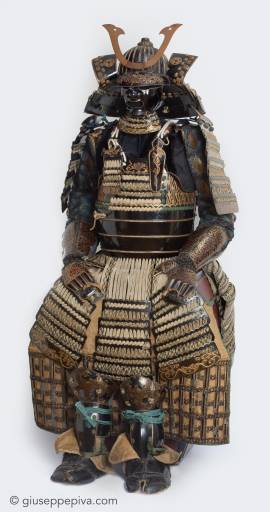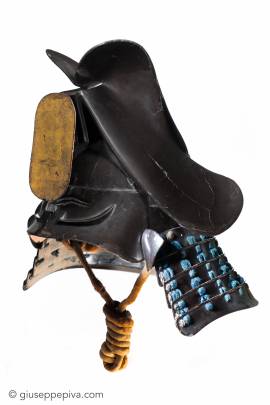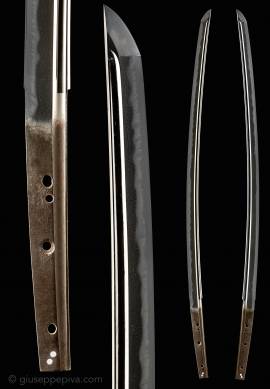Ni-mai do tosei gusokuSecond half of Edo Period (1615-1867)19th CenturyHeight: 86 cmDuring the 17th Century samurai families used to display a set of helmet and armor, weapons and banners outdoors on the Tango-no-Sekku Festival (The Boy’s Festival), held on the fifth day of the fifth month, designated as an important ceremonial day by the Edo Shogunate Government. Later in the Edo period these items, except for the banners, were moved indoor, on rooms facing the street. The style of displaying varied in accordance and the armors gradually became miniaturized, thus keeping splendid...
WORKS FOR SALE
Samurai helmet in the shape of a capLacquered ironEdo period, 17th-18th century The helmet is made entirely of iron and is made with six plates on which four other iron sheets are fixed.The shape is quite rare and is reminiscent of the mōsu, a type of headgear worn by Buddhist monks.A helmet of the same shape but left in natural iron is preserved at the Iwakuni Art Museum and is considered one of Japan's most famous kawari kabuto.The gilt-wood maedate depicts a gold coin.
YOSHIOKA ICHIMONJI KATANALate Kamakura PeriodMumei, circa 1320NBTHK Juyo TokenNagasa [length]: 66.8 cmSori: 1.6 cm, motohaba: 3.0 cm, sakihaba: 2.1 cmSugata [shape]: Shinogi-ø, iori-mune, tori-zori curvature with chu-kissakiKitae [forging pattern]: Ko-itame mixed with nagare hadaHamon [ltemper line]: Choji midare, sometime saka-choji, mixed with ko gunome, in nioi dekiHataraki [activities]: Koashi, yōBoshi [point temper line]: Notare komi with komaru.Nakago [...
Copyright © 2016 - giuseppe piva - VAT: 05104180962










